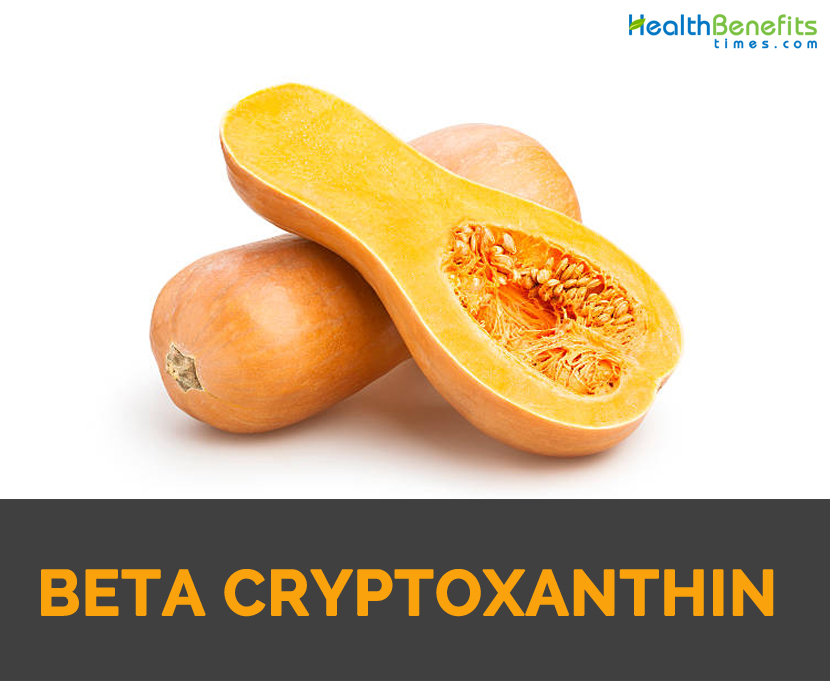 Beta-cryptoxanthin belongs to the class of carotenoids, specifically xanthophylls. In the human body, Beta-cryptoxanthin is converted to vitamin A (retinol) in human body and is considered to be a pro-vitamin A. It is a common carotenoid which is found in fruit, human blood and tissues. Foods with high content of beta-cryptoxanthin include persimmons, tangerines and oranges. It has assorted functions which are crucial for human health including roles in antioxidant defense as well as cell-to-cell communication. Beta-cryptoxanthin is a precursor of Vitamin A which is a crucial nutrient required for eyesight, development, growth and immune response. It acts as an antioxidant which helps to lower the chances of degenerative diseases and cancers. Foods rich in β-cryptoxanthin have anabolic effect on bone and delay the onset of osteoporosis. Being a strong antioxidant, it prevents damage of free radicals to cells and DNA. It also lowers the chances of colon cancer and lung cancer.
Beta-cryptoxanthin belongs to the class of carotenoids, specifically xanthophylls. In the human body, Beta-cryptoxanthin is converted to vitamin A (retinol) in human body and is considered to be a pro-vitamin A. It is a common carotenoid which is found in fruit, human blood and tissues. Foods with high content of beta-cryptoxanthin include persimmons, tangerines and oranges. It has assorted functions which are crucial for human health including roles in antioxidant defense as well as cell-to-cell communication. Beta-cryptoxanthin is a precursor of Vitamin A which is a crucial nutrient required for eyesight, development, growth and immune response. It acts as an antioxidant which helps to lower the chances of degenerative diseases and cancers. Foods rich in β-cryptoxanthin have anabolic effect on bone and delay the onset of osteoporosis. Being a strong antioxidant, it prevents damage of free radicals to cells and DNA. It also lowers the chances of colon cancer and lung cancer.

Food Sources
| Food name | Weight (g) | Beta cryptoxanthin (µg) |
| Butternut squash | 205 | 6388 |
| Japanese persimmon | 168 | 2431 |
| Tangerines | 189 | 1465 |
| Papayas | 145 | 854 |
| Rose Hips | 127 | 613 |
| Orange juice | 249 | 369 |
| Cucumber pickles | 160 | 298 |
| Carrots | 146 | 291 |
| Peaches | 244 | 266 |
| Plums | 252 | 257 |
| Yellow corn | 165 | 246 |
| Oranges | 185 | 215 |
| Apricots | 155 | 161 |
| Paprika | 2.3 | 142 |
| Nectarines | 143 | 140 |
| Watermelon | 154 | 120 |
| Passion-fruit juice | 247 | 116 |
| Jalapeno peppers | 90 | 94 |
| Dandelion green | 105 | 86 |
| Avocados | 230 | 83 |
References:
https://www.ncbi.nlm.nih.gov/pubmed/25270992
https://www.ncbi.nlm.nih.gov/pmc/articles/PMC4892306/
https://www.phytochemicals.info/phytochemicals/beta-cryptoxanthin.php
https://pubchem.ncbi.nlm.nih.gov/compound/beta-Cryptoxanthin#section=Top
